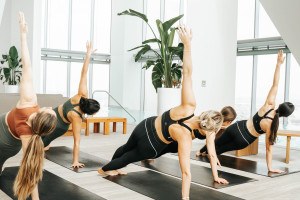When She Was Growing Up, This Local Boudoir Photographer Hated Her Body
Now Cheyenne Gil makes a point of celebrating all bodies, with a focus on fat women and femmes and people of color.
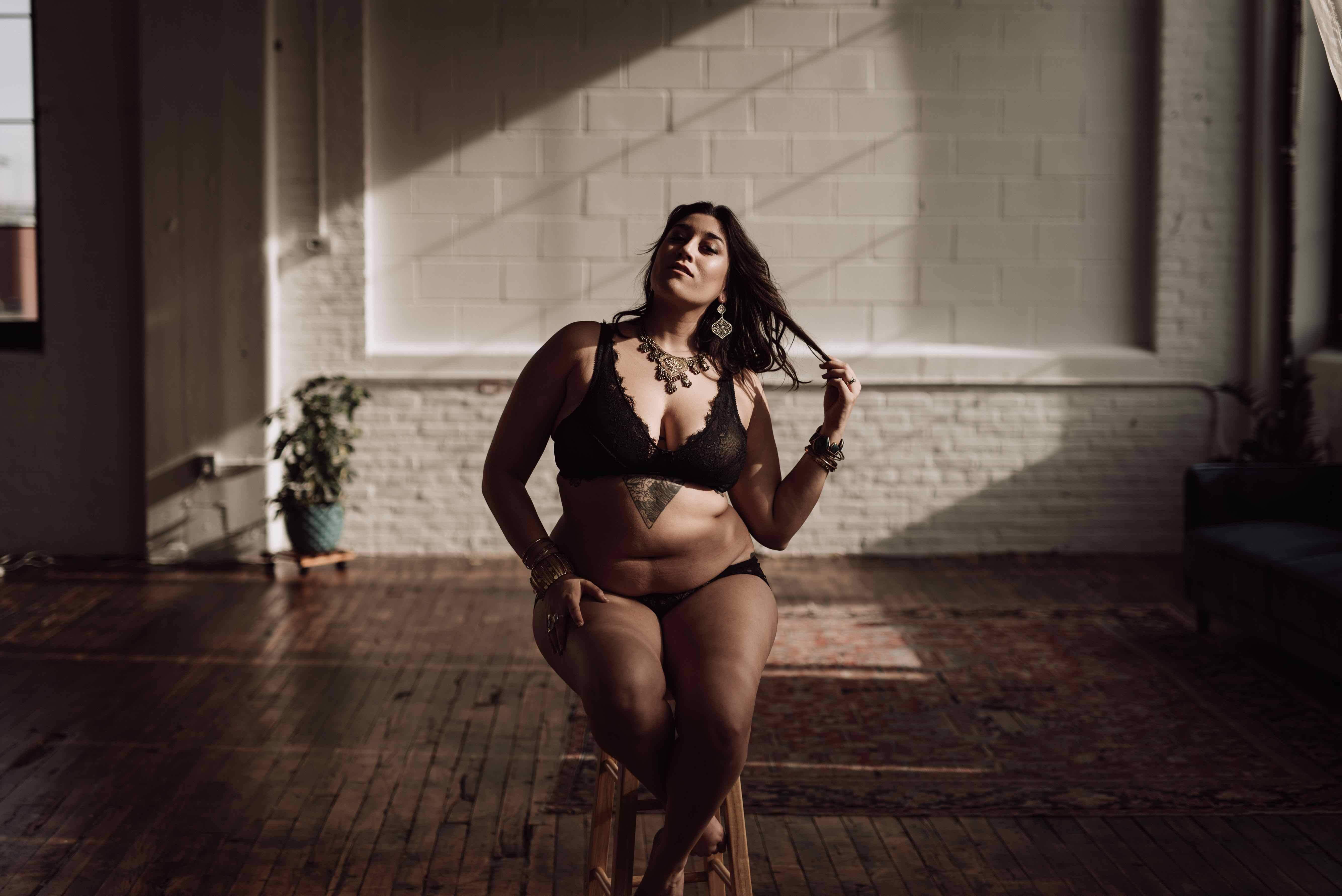
Cheyenne Gil is a local body-positive boudoir photographer and fat advocate. / Photograph courtesy of Cheyenne Gil
Who I am: Cheyenne Gil (@cheyennegil)
What I do: I’m a body positive boudoir photographer specializing in confidence-inspiring, natural sessions.
***
“I was never diagnosed, but I believe that I had severe body dysmorphia. It was way more than, ‘Oh, I wish I could tone up.’ It was an obsession with wishing that I looked different, being upset that that’s the way I was born and that I would never look like Kate Moss — super skinny and tiny boobs and all that. I was just completely brainwashed.
I was probably seven or eight when the diets and the family walks for everyone to stay in shape started. I’m half Colombian, and in our family food is a huge thing. When we have parties, we have so much food and yet everyone is on a diet or everyone is not eating carbs that day. It’s so hysterical — everything is centered on food, but we’re not allowed to eat it.
The Colombian culture, especially where my family’s from in Medellin, is all about appearances. Everyone has their whole body redone because it’s inexpensive to do that there. When I was a kid, I always believed, ‘Oh, if I get fat, I’ll go to Colombia and get my body done.’
Recently, I was looking at photos of myself from when I was younger, and it’s so heartbreaking to now know that I was in a small body, not in a fat body. At the time, I could not understand that. I truly believed people were looking at me and making assumptions about me. If I was eating something, I thought they were saying, ‘Of course she’s eating that, she’s fat and gross.’
When I was in college studying photography, I started doing self-portraits — drawings and photos. They were always very dark and angry and sad. Someone said in a critique once, ‘Wow, Cheyenne, it looks like you really hate yourself.’ I was like, ‘Oh, what, yeah, duh, of course I hate myself.’ That was the moment when I had the thought, ‘Do people not hate themselves? Is there another option?’
And then, one day, the light was so beautiful that I decided to take a photo of myself. It was really bright, and I was smiling, and I had a bra and panties on. It was the first time I saw beauty in myself and femininity in myself on my own terms. Men had always said I was exotic-looking and all of that bullshit. That was my only source of how I knew I was pretty. But then I realized the power of really truly seeing yourself. I shared that photo on Instagram and wrote some stuff and had so many people thanking me. That’s when I realized, ‘Oh, wow, everyone is feeling or has felt really similar ways and has no idea because no one talks about it.’
Things just snowballed from there. I dropped out of college after junior year to run my photography business. I started out shooting in my parents’ living room on a blow-up bed under the window. At the time, boudoir was very heavily geared toward the male gaze and sex. Which, sex is great, and sexy is great, but it was about doing it for men. It was all high heels and footballs and football jerseys. I was talking to my mom, and I said, ‘I want to photograph women, but I don’t want to photograph them like this.’ She said, ‘Well, make it your own.’
My mom struggled with body image issues her whole life. I watched her hate herself, and that’s where I learned it. That day, though, when she said, ‘Make it your own,’ she got in a bra and panties, and I did my first boudoir shoot. I had no idea what I was doing. I was just shooting her rolling around the bed and having fun. In front of my eyes, my mom was giggling and laughing and playing with her hair. She wasn’t worrying about what she looked like. I was like, ‘Oh my god.’ It gives me chills every time. After we were done shooting, I left the room and on the way back, I caught her in the mirror fluffing her hair and checking herself out. From that moment on, I stopped shooting everything else and called myself a boudoir photographer. I wanted to make everyone feel that way.
This work is just the best job in the universe. It’s also really hard. Every session’s like a therapy session. I’m not a doctor or a therapist, but I am in that position often. People come to me at this point because they’re ready to celebrate themselves and they want to see themselves and be seen. I have turned people away. If someone’s suffering from body dysmorphia or a severe eating disorder, this could be not very helpful and that’s OK. But there are people who feel in their hearts that they’re ready even if it feels super scary. Sometimes I have clients who are in tears, saying, ‘Maybe I should just come home.’ I let them know, ‘If you want to go home, you can go home. But I want you to stay.’
All my sessions start at 10 a.m. They get their hair and makeup done, and I start shooting around 11:15. I am a Capricorn. I’m very in control of what’s going on — showing you every pose, walking you through everything. I do not shut up the whole time. Essentially what I’m doing is distracting you from what’s going on so you can forget about what’s happening and just relax and have fun with it. I always tell them, ‘Do you see how calm I am right now? Everyone’s nervous. But as soon as we start shooting, it’s all going to melt away.’
That’s what happens every time. It’s simply being seen, in this case by me. But I often show the back of the camera when we’re shooting, so you can literally see yourself, and everyone is always like, ‘Oh my god, is that me?’ It’s so interesting ‘cuz you build up this image of yourself in your head, and for some people it’s monstrous. If you really look at it, it’s just so simply beautiful. It’s literally in that first minute where we’re shooting that the transformation is starting to happen. This idea of being seen, not just watched, but you’re being seen truly — that’s where the thing is happening.

Photograph by Cheyenne Gil
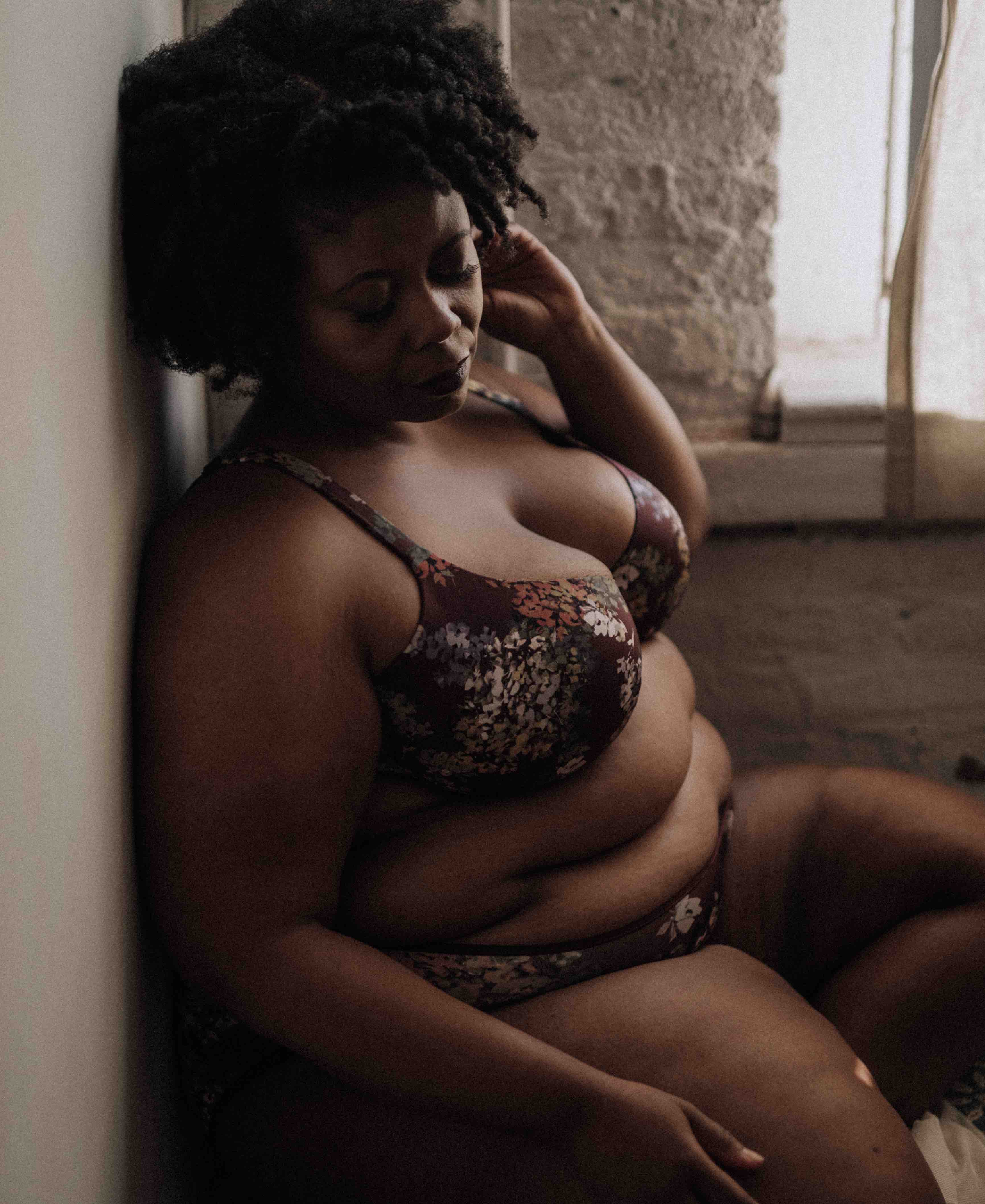
Photograph by Cheyenne Gil
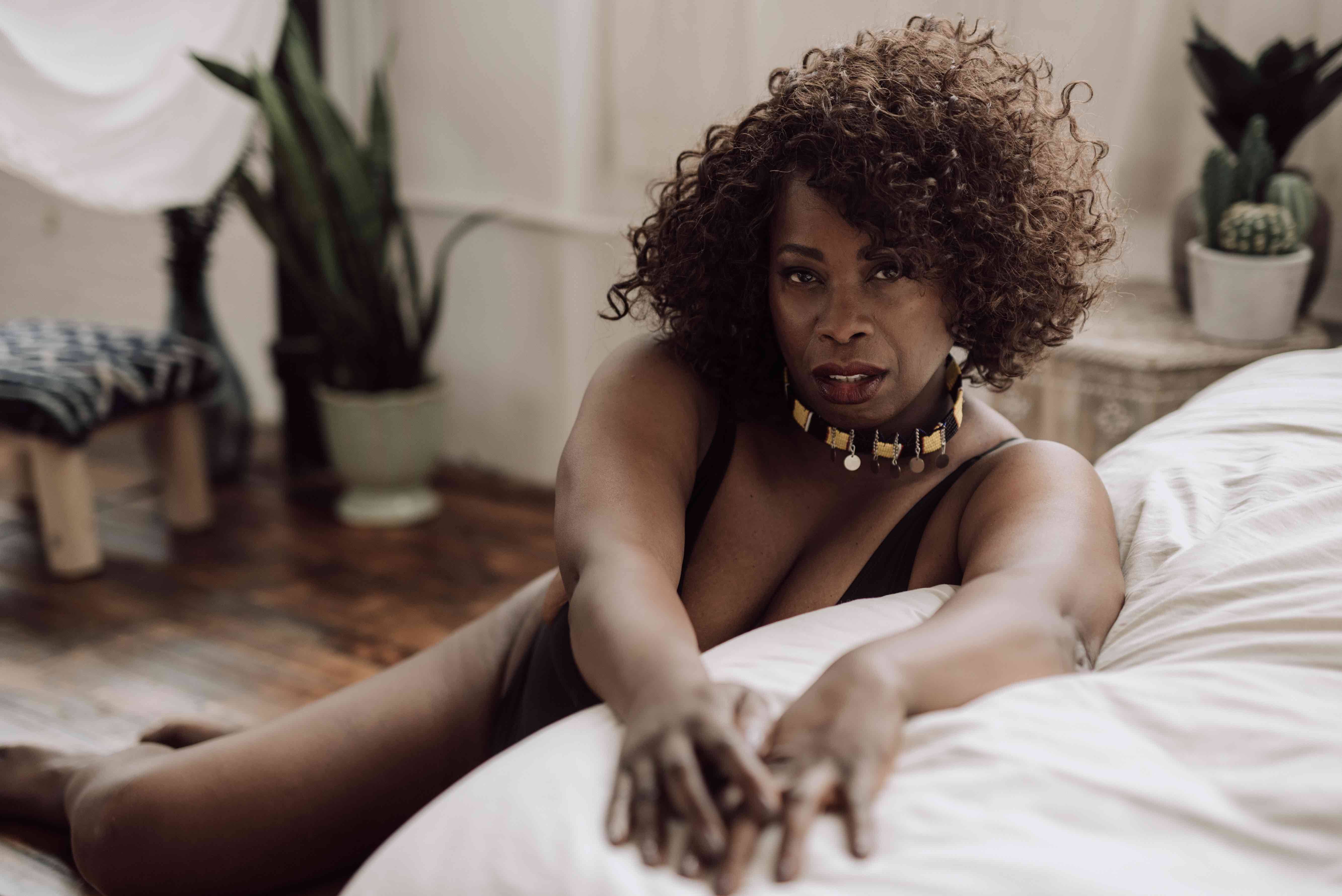
Photograph by Cheyenne Gil

Photograph by Cheyenne Gil
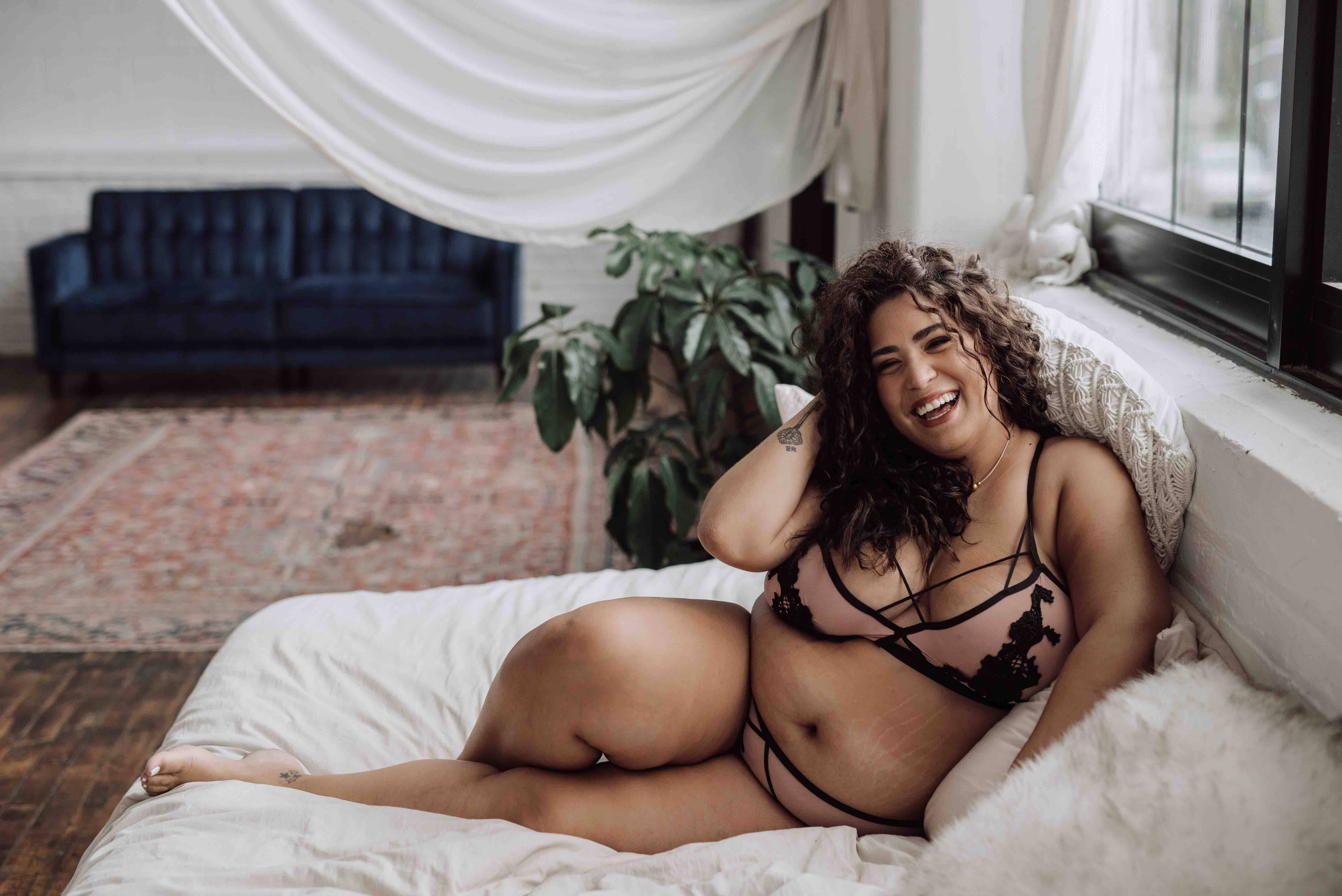
Photograph by Cheyenne Gil
I work really hard to create this safe space, where people can feel free to just exist. Where my big fat fatties can walk around and the floor is shaking and creaking and they feel good about it. Their boobs are swinging from side to side and they’re jiggling. That’s what this space is for. They don’t have to feel small. They can feel big, and that’s great.
It’s become so clear how much is kept from us, that we don’t see real bodies. We are only seeing a curated, ridiculously unrealistic image of what we’re ‘supposed to look like.’ I’m Colombian and Italian — there’s no way I’m going to look like Kate Moss. It’s just not physically possible. It’s really hard for people to understand that and let go of those desires to want to be smaller, that big doesn’t have to mean bad. A lot of people will say, ‘I look so big,’ and I’ll say, ‘And? Is that bad?’
There are literally posing guides for photographers to make fat women look smaller. To make sure that they’re standing a certain way or if you want to cover their belly, you should shoot them from behind the couch. I break all the rules. I will photograph you from below and up at your beautiful fat belly if you have one. I feel like that stuff’s really important — it’s really important to break the cycle.
The reclamation of the word fat is really important to fat people because it’s been used against them for so long. And I do think it’s important that that word is reclaimed. Fat people and people in bigger bodies have very different life experiences because they are in those bodies. I’m technically in a plus-size body and would be considered a small fat. Someone made a chart outlining the different levels — small fat, I think just fat, super fat, and infinite fat. Again I’m not going to have the same experience as someone who’s 10 sizes larger than I am. That’s why it feels important for lack of a better term to label it because I think people in thinner bodies will never really understand what people in fat bodies go through.
But really, I’m in a very privileged body. I’m conventionally beautiful. I’m in just a fat enough body that it’s not hard for people to look at. And I’m ethnically ambiguous. So people like to look at me and listen to me because it feels easy to them.
Instagram is an awesome tool because you choose who you follow, and I feel a lot of responsibility to direct attention to these accounts that are even more marginalized than I am. It’s really important to follow people in big bodies and fat bodies, disabled bodies, black bodies, brown bodies, trans bodies, and to see how they live their lives. My husband is in a very, very skinny body. While he completely supports everything that I do, for a long time he had issues understanding why it’s OK to be super fat. So I said, ‘Babe, here are some Instagram accounts you can follow. Here are some really important men and women who you can listen to.’ And now he gets it more. It’s just a reconditioning.
I am at this point comfortable in my body. I can wear a belly shirt. I can wear a bikini. I’m very comfortable naked. It’s the food that’s the hard thing for me. Just in the past year, I’ve been able to understand how to eat what I want, when I want, and that allows me to help other people in my job with what I do, too. I thought I got past a lot of the brainwashing, but no, there’s still this lifetime of crap that’s mashed down on us.
Philly has a lot of really great therapists who are dedicated to helping people deal with these things. In terms of spaces, there are a lot of things popping up now that are awesome — Curve Conscious is a plus-size secondhand store; Dana Falsetti used to be a yoga instructor, and now she does all vintage plus size clothing. My associate photographer, Kimberlee, who is black and our friend Mariane, who is also black, run Sunday suppers here for black women and femmes only. It’s a potluck once a month, where we have a speaker come in and create a space where black women can gather and find community together.
There’s still a lot of work to be done, especially around the wellness industry, which isn’t always serving the people who it’s meant for. But it’s happening. There are a lot of fat marginalized people here, people of color, disabled people. They want the space. It just needs to be provided.”

